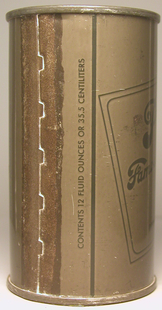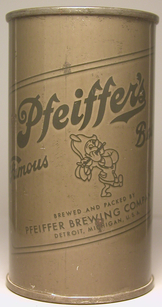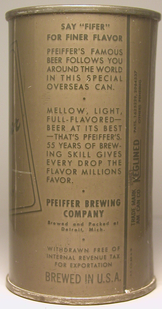A muddy fox hole, somewhere along a hedgerow in eastern France. This has
been home for you and your platoon for nearly three days. Although the
German Wehrmacht is in retreat, snipers still harass the advancing Allied
Forces and are a threat throughout the Ardennes Forest. The Battle of the
Bulge is long over, but from where you sit, it sure doesn't feel like it.
K-rations are as bland as you were told they would be. Some flavor would
be nice every once in awhile!
You've been in Europe for nearly a year now; the last month spent digging
holes, sitting in them, then burying them. Lots of shooting, fighting,
thinking. A long way from Greenville, Michigan. Homesick? Of course.
Hopefully, the war will be over soon, but for now, you have to endure the
private hell of this earthen pit. Sergeant Briggs seems a bit more upbeat
today. Something was on his mind, but as always, you never could read the
man. There was a glint in his eye as he just walked by, heading for the
jeep that had pulled up a few minutes earlier. The sergeant speaks with the
messenger in the jeep, shaking his head from time to time. The messenger
soon produces an olive drab, cardboard box from the back seat of the jeep
and hands it to the visibly satisfied Sergeant.
Sergeant Briggs tosses the oblong box under one arm and sends the jeep on
its way. As he strides along the perimeter of the fox holes, he tears one
end open and pulls out a military issue can of beer. Without even looking
at it, he tosses the can to a surprised GI. He continues down the row,
flipping each member a can.
"Boys", smiles Sgt. Briggs, "Have a snort, then pack up, we're headin' for
Germany at 09:00 hours!"
You receive one of the cans and find it is beer of a brand from back home!
Although it is olive in color, the label featuring a fox hunter blowing a
French Horn is a welcome sight! Fox Deluxe; your Dad drank that when you
were in high school. That was only a couple of years ago. Your partners
use their knives to pierce the lids and quickly gulp down the contents,
after all, this is the first beer in months! A few precious sips, and the
cans are smashed under foot, and buried, one by one, along with the rest
of the K-ration tins.
But you are still looking at that can, with the memories of home it brings.
You can't bring yourself to open it, and after several minutes of
reminiscing, you put it in your pack. You hop out of your hole as one of
our Sherman Tanks, fitted with a bull dozer blade on its front, begins
covering the fox holes and the scraps of tin within.
Several decades pass. An elderly woman places several articles on a garage
sale table. She looks at the olive drab can that spent so many years in
their attic. Maybe she could make a few dollars off this. After all,
it is so ugly...
Although the distribution of military cans is not readily available, the
previous passage adds a bit of nostalgia to what could be considered by
some to be a boring can. Michigan produced three olive drab cans during
World War II; two of which are extremely difficult to obtain.

|

|

|
| USBC 113-38 | ||
The Pfeiffer's Famous Beer (USBC 113-38) is the most common of the three olive drab cans. This is not to say it is easily obtainable. The face of this can appear to follow many of the characteristics of the yellow Pfeiffer's cans, yet lack the intricate background artwork. The most interesting feature of this can lies on its right side panel, where two paragraphs of text invite the drinker to partake in a flavor millions favor. Unlike subsequent Pfeiffer cans, this can has the distinction of holding the Others Pending legend along the Keglined seam. The panel on the left side of the seam notes the contents of this can.

|

|

|
| USBC 65-13 | ||
Fox Deluxe (USBC 65-13) retains nearly all the facial graphics of its prewar counter part, though it is non-instructional. The right side panel has the KEGLINED and OTHERS PENDING box along the seam. The contents run vertically along the KEGLINED box. On the left side panel, the "WITHDRAWN FREE OF INTERNAL REVENUE TAX FOR EXPORTATION" statement runs vertically from bottom to top. On the outside of this, "BREWED IN U.S.A" also runs vertically (identical to the Goebel cans of the late 1940's and early 1950's). It is a seldom seen military issue and very few have survived to this day.

|

|

|
| USBC 70-33 | ||
Although the Fox Deluxe is extremely difficult to acquire, the Goebel Gold Label (USBC 70-33) is arguably the toughest of the Michigan wartime cans. The Goebel shares all of the facial characteristics of the common opening instruction can (USBC 70-32) except that it does not retain the OI panel. This Others Pending can differs greatly from the other similar Goebel designs in that the right side panel has a Keglined bar that runs parallel to the seam. Outside of this, the content of the can are printed, as well as the familiar "BREWED IN U.S.A." legend. The left side panel contains the WITHDRAWN FREE OF INTERNAL REVENUE TAX FOR EXPORTATION mandatory along the seam, with the brewing company information outside of the panel bar. This also runs parallel to the seam (perpendicular to the bottom of the can).
A few points of interest that may be noted is that the statement "DISREGARD STATEMENT WITHDRAWN FREE OF INTERNAL REVENUE TAX FOR EXPORTATION INTERNAL REVENUE TAX PAID" found on many OD can lids. We can only imagine those stateside lucky enough to have drank from them.
Another oddity I have noticed with Olive Drab cans in general is that the seams on the American Can Co. cans have five distinct "teeth" on the seam. Whether this was a can construction innovation at a pivotal time or merely a coincidence, I do not know.
Ironically, I recently dug a dump in Michigan (along with Dave and Michelle Wheaton) that contained Goebel (USBC 70-32), Fox Deluxe (USBC 65-14), Pfeiffer IRTP (USBC 113-39), and Budweiser (L51/31) all with the toothed seam construction. Until I found these examples, I had never seen these brands of that age with the toothed seams. The cans I found had 3 pat. numbers, placing them post war. I do realize that several 1950's cans used this type of seam, but again, I am attempting to chronologically date the cans by construction (as one does with "flat top" cans as opposed to cans with the pressure bead, and LP vs. HP cones). Hopefully someone out there can shed insight.
I hope that these previously unpictured side panels serve as a good reference for you. Many cans are considered common looking on the face. By examining the side panels, the cans take on a whole new life.